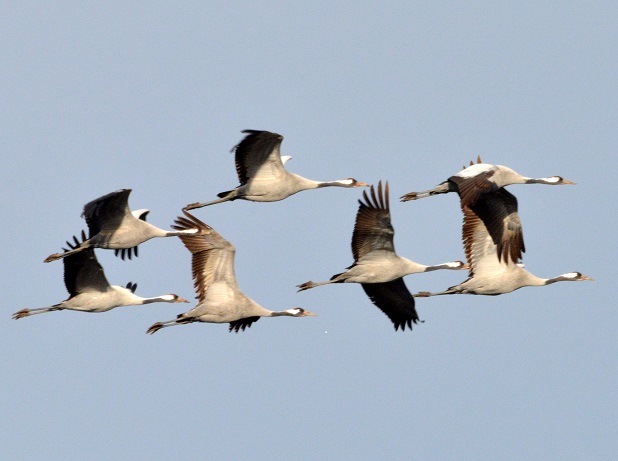UK Crane population reaches its highest level for over 400 years

The Common Crane was lost from the UK for nearly 400 years, but thanks to conservation efforts their population numbers have once again hit record levels.
These birds, the tallest in the UK at 4ft, used to be quite common. They were even frequent fixtures at medieval feasts – Henry II’s chefs cooked up 115 of them at his Christmas feast in 1251, but a combination of hunting and wetland decline led to their extinction in the 1600s.
In 1979, a small number of wild Common Cranes returned to Norfolk and conservation groups have been working together to encourage more and more of these birds. They have now spread to other areas of the UK, benefitting from improved habitat such as at the RSPB’s Lakenheath and Nene Washes reserves as well as Natural England’s Humberhead Peatlands. Common Cranes recolonised Scotland in 2012 and Wales in 2016.
In 2010, the Great Crane Project – a partnership between the RSPB, WWT and the Pensthorpe Conservation Trust, and funded by Viridor Credits Environmental Company – joined the movement. The project creates and improves existing habitat, as well as hand-rearing young birds for release on the Somerset Levels and Moors.

All the conservation effort has yielded impressive results, with 56 pairs across the UK last year. Of these, up to 47 pairs attempted to breed and they raised 26 chicks. The total population is now believed to be over 200 birds - a new record.
Damon Bridge, Chair of the UK Common Crane Working Group said: “The increase of Common Cranes over the last few years shows just how resilient nature can be when given the chance. With the support of our wonderful partners we’ve been able to recreate more and more of the Common Cranes’ natural habitat, giving them a place to recuperate after the winter and raise their chicks. They are not yet out of the woods, but their continued population climb year after year is a very positive sign.”
Andrew Stanbury, RSPB Conservation Scientist said: “Thanks to the dedication of individuals, the UK Common Crane Working Group and conservation organisations, we are delighted to see Common Crane numbers continuing to recover. Nature reserves have played a vital role. At least 85% of the breeding population are found on protected sites, with a third on RSPB reserves alone”.
Dr Geoff Hilton, WWT’s Head of Conservation Evidence said: “The reintroduction of lost species must be supported with good habitat management and protection for the recovery to work. The success of the Common Crane project to date demonstrates what can be achieved in a short space of time by giving nature a helping hand. We also must thank dedicated land managers and farmers in the area for supporting Common Crane conservation.”
Chrissie Kelley, Pensthorpe Conservation Trust’s Head of Species Management said: “'As partners in the GCP, and with a long association working with Eurasian Common Cranes, we are thrilled to see wild Common Cranes doing so well. Seeing these birds in flight is breath-taking and we have regular sightings of them over our reserve in Norfolk. We hope soon to spot one of the released birds amongst those that visit Pensthorpe
22 April 2020
Share this story




